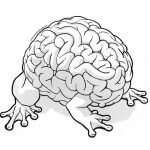Hari Tsoukas, an expert in organizational studies at the University of Cyprus, highlights the distinction between “information” and “knowledge.” Information, he wrote, “consists of objectified, decontextualized, time-less, impersonal, value-free representations,” whereas knowledge is “context-dependent, personalized, time-bound, and infused with values.”
Robert Wachter, The Digital Doctor
In 2017, Dr. Robert Wachter published The Digital Doctor. Shortly thereafter I read it, and it changed my life. I had already been working in Content Strategy for over 5 years, and worked on a few healthcare projects. The Digital Doctor showed me how necessary my work – content strategy – was in healthtech. Recently I decided to revisit the book. This time I found details I hadn’t noticed the first time around.
Content strategy in healthtech
Early in the book, Wachter speaks about Hari Tsoukas and his description of information vs knowledge. Of course I immediately thought of content strategy. A good content strategy provides context for any information. Getting the right content to the right people in the right place and the right time means never offering information without context.
One of Wachter’s examples of information is radiology labs. A radiologist can now see hundreds of scans, where they used to see perhaps 3. In theory, this makes it easier to see if there’s a tumor (or blockage, or whatever else is being scanned). In reality, it adds information without necessarily giving context to where and how and why the radiologist should look at one scan versus another.
How can you turn information into knowledge?
Often, a new project in healthtech focuses on adding information. For example:
- Telling insurance members when to get care
- Informing people where to get vaccines
- Making sure people know when to go to an urgent care vs an emergency room
- Showing people their pulse, oxygen levels, lab results, and more
But too few teams discuss how, when, and where. In other words, with what context?
This is where content strategy comes into play. Content strategy in healthtech connects all of that information to the place the person is, their health literacy level, their needs at that moment. The content strategist asks:
- Is the information a reminder to do something, or a task to complete here and now?
- Should it appear as a phone alert, or a downloadable checklist?
- Is it something that can be done in an app, or in the “real world”?
- Will this information be customized to each person? If so, how?
Why do we need content strategy in healthtech?
Healthtech is ever more excited by the proliferation of data. Though Wired Magazine voiced many peoples’ concerns back in 2013 (More Data, More Problems), it’s exciting to know more. And data looks like the way to know more.
But content strategy in healthtech is the only way to make that data useful. AI can help sift through it. Then a content strategist connects it to user needs. With a good content strategy, we can turn much more information into knowledge.


